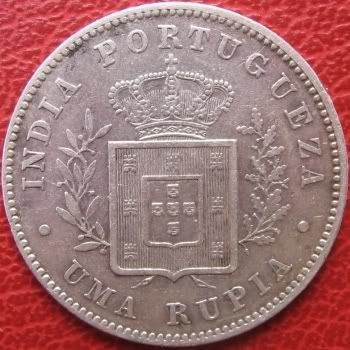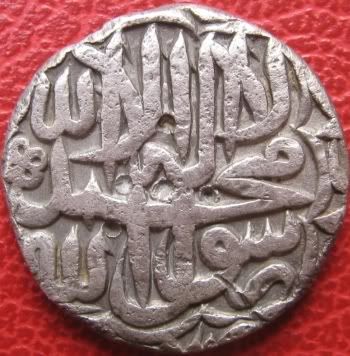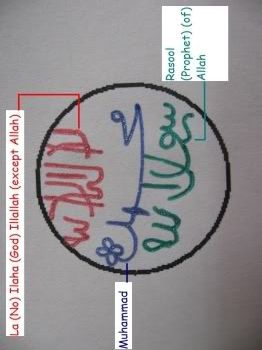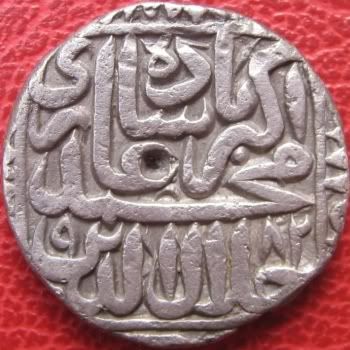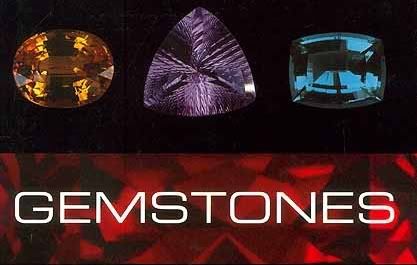The currency of Portuguese India was changed to a new standard as a result of the Luso-Britannic Convention of 1880 with the silver rupee (Uma Rupia), eleven-twelfths pure silver .916 fine and weighing 11.66 grams. Half-rupee (Meia Rupia), quarter-rupee (Quarto De Rupia), and eighth-rupee (Oitavo De Rupia) as divisions were minted at both the Calcutta and Bombay mints to the same standards corresponding to the coinage of British India. The rupee and half-rupee were struck dated 1881 and 1882, while the quarter-rupee and eight-rupee were issued only in 1881. A copper coinage was issued dated 1881, 1884, 1886, and 1888 with a much higher mintage.
Obverse Bare head of Luiz I left, LUDOVICUS I PORTUG ET ALGARB REX 1882 (Luiz I, King of Portugal and the Algarve, 1882)
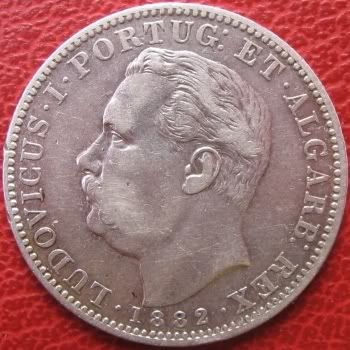
Reverse Crowned plain shield, having on it seven castle towers, surrounding a cross made of five shields, all within wreath of laurel and oak; INDIA PORTUGUEZA UMA RUPIA (Portuguese India, 1 Rupee)
